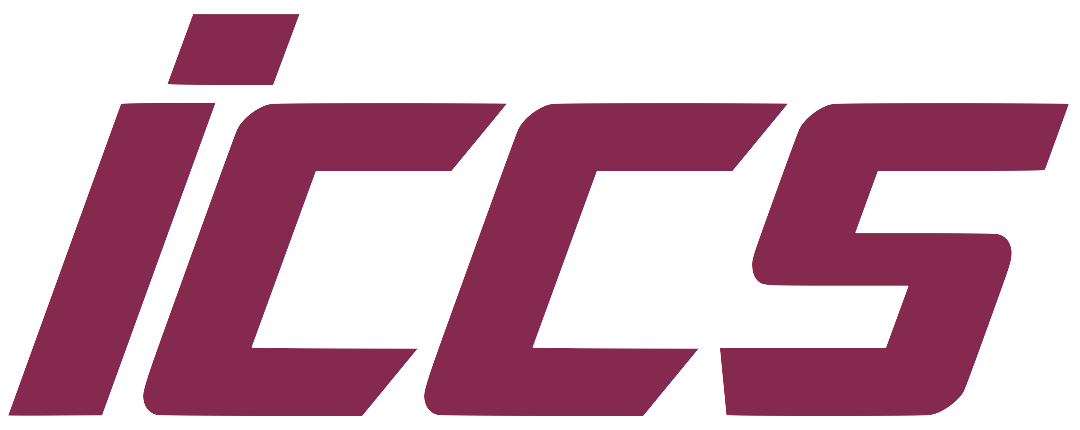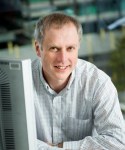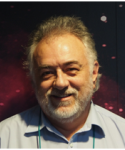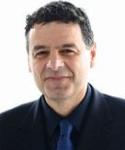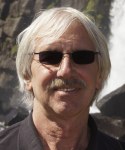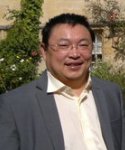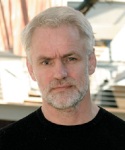Keynote Lectures
ICCS is well known for its excellent line up of keynote speakers. This page will be frequently updated with new names, lecture titles and abstracts.
David Abramson, The University of Queensland, Australia
Translational Computational Science: From The Lab To Practice
Tim Cornwell, Square Kilometre Array Telescope (SKA), UK
A Computational Radio Telescope – The Square Kilometre Array
Petros Koumoutsakos, Swiss Federal Institute of Technology Zurich, Switzerland
The Arrow of Computational Science
J. Stephen Lansing, Nanyang Technological University, Singapore
Islands of Order
Xin-She Yang, Middlesex University London, UK
Nature-Inspired Optimization Algorithms: Learning from Nature
Kári Stefánsson, deCode Genetics, Iceland
Genetics of Common Diseases
The University of Queensland, Australia
WEB
Professor David Abramson has been involved in computer architecture and high performance computing research since 1979. He has held appointments at Griffith University, CSIRO, RMIT and Monash University. At CSIRO he was the program leader of the Division of Information Technology High Performance Computing Program, and was also an adjunct Associate Professor at RMIT in Melbourne. He served as a program manager and chief investigator in the Co-operative Research Centre for Intelligent Decisions Systems and the Co-operative Research Centre for Enterprise Distributed Systems. He was the Director of the Monash e-Education Centre and a Professor of Computer Science in the Faculty of Information Technology at Monash University.
Abramson is currently the Director of the Research Computing Centre at the University of Queensland. He is a fellow of the Association for Computing Machinery (ACM) and the Academy of Science and Technological Engineering (ATSE), and a Senior Member of the IEEE.
Translational research is well understood in medicine. Research projects not only target real world problems, but “translate” the solutions into practice. Examples are common and well understood, for example determining how a tumour grows, designing drugs that destroy it, and then testing these in real world studies with patients. The advantages are clear: science is advanced but society benefits in immediate ways. Translational research is less well understood and practiced in computing. All too often, research outcomes are not tested in the real world, and thus while solutions may appear attractive, they fail to be useful.
In this seminar I will discuss a framework that fosters the development of novel computer science, but tests the outcomes in practice. This has been deployed both in the Monash e-Science and Grid Engineering (MeSsAGE) Lab and the University of Queensland Research Computing Centre, (RCC) in which disruptive technologies are trialled in practice. These platforms incorporate a student training component that offers international research internships to undergraduates, and a virtual seminar program that allows local researchers and students to interact with some of the world’s leading experts. Through industry engagement, the platforms also lead to commercial outcomes that have longer term benefits for the research organisations.
Square Kilometre Array Telescope (SKA), UK
WEB 1 & WEB 2
Tim Cornwell has worked at the forefront of radio astronomical technical development for over 35 years. He has a PhD (1980) from the University of Manchester in England where he worked on image processing algorithms for radio synthesis telescopes. His first significant contribution was the development of the self-calibration algorithm widely used in radio astronomy. In 1980, he moved to Socorro, New Mexico to work on the newly completed Very Large Array telescope run by the National Radio Astronomy Observatory. Over the 25 years at the NRAO, he made many contributions to radio astronomical techniques, including the key algorithms needed for wide fields of view: mosaicing wide fields, and w projection for correcting Fresnel diffraction for wide fields. In 1986, he used the CRAY-YMP at Digital Productions to produce the first 16 MPixel radio interferometric image. He also contributed in the areas of telescope design (for the Atacama Large Millimeter Array), telescope commissioning (the Very Long Baseline Array), observatory management, and software development. He has also consulted widely: NASA on the HST Aberration, the US Intelligence Community on approaches to combat terrorism, the Naval Research Laboratory on design of a space borne interferometric array, ESO on the configuration of the VLTI, NASA on the Spaceborne Interferometric Mission, and others.
In 2004, he joined the Square Kilometre Array International Engineering Working Group, primarily to contribute towards computing and algorithms. In this role, together with colleagues from around the world, he conducted systematic investigations of SKA processing costs, SKA software development costs, and SKA software development methodology.
In 2005, he moved from NRAO to the CSIRO Australia Telescope National Facility to take the lead role in computing for the Australia SKA Pathfinder (ASKAP). He was heavily involved in all aspects of the development of ASKAP computing, and most particularly in the provision of high performance computing for the telescope. Within Australia, he served on a number of national committees concerned with the growth of eResearch in Australia.
In 2012, he joined the SKA Organization Office at Jodrell Bank as Head of Computing, responsible for overseeing the architecture of the computing aspects of SKA. In January 2013, he took on the role of SKA Architect with responsibility for the entire technical architecture of SKA.
Throughout his career, Dr. Cornwell has published extensively on multiple research topics. He has also served on numerous Scientific Organizing Committees for international conferences.
The Square Kilometre Array (SKA) will be one of the largest scientific projects in history. The SKA will consist of three radio telescopes, sited in South Africa and Australia. The designs depend crucially on digital technology – signal processing at the frontend, and science data processing at the backend. The backend processing is dominated by large data flows, and requires close to 1 Exaflop for data processing. Challenges abound in the signal processing and computing development areas. I will discuss these challenges and how the worldwide community engaged in SKA design is tackling these challenges.
Swiss Federal Institute of Technology Zurich, Switzerland
WEB
Petros Koumoutsakos is Full Professor of Computational Science at ETH Zurich since 2000. He received his Diploma (1986) in Naval Architecture at the National Technical University of Athens and a Master’s (1987) at the University of Michigan, Ann Arbor. He received his Master’s (1988) in Aeronautics and his PhD (1992) in Aeronautics and Applied Mathematics from the California Institute of Technology. He is Fellow of the American Society of Mechanical Engineers and the American Physical Society as well as recipient (2013) of the ACM Gordon Bell prize in Supercomputing and the Advanced Investigator Award by the European Research Council.
The solution of important scientific and societal problems of our century, such as health, energy and the environment hinge on the fusion of mathematics and information technology. Computational science is the new scientific field emerging from this fusion. Computational science encompasses the systematic integration of data and first principles to understand, predict and solve problems across disciplinary boundaries. In this talk I will demonstrate research practices and future directions in Computational science using two examples: the identification of optimality in natural swimmers using Direct Numerical Simulations and evolutionary optimisation and the quantification of uncertainty in data driven simulations of water flow in carbon nanotubes.
Nanyang Technological University, Singapore
WEB
J. Stephen Lansing co-directs the Complexity Institute at Nanyang Technological University in Singapore. He is also an external professor at the Santa Fe Institute, birthplace of complexity theory, an emeritus professor of anthropology at the University of Arizona, and a senior research fellow at the Stockholm Resilience Centre. Before moving to Arizona in 1998, Lansing held joint appointments at the University of Michigan in the School of Natural Resources & Environment and the Department of Anthropology, and earlier chaired the anthropology department of the University of Southern California. He has been a Fellow at the Institute for Advanced Study at Princeton, the Center for Advanced Study in the Behavioral Sciences at Stanford, the Institute of Advanced Study at Durham University, the Santa Fe Institute, the Stockholm Resilience Center and the Eijkman Institute for Molecular Biology in Jakarta. His recent research has to do with the long-term dynamics of coupled social-ecological systems.
Recent publications and films are available at http://www.slansing.org.
Not long ago, both ecology and social science were organized around ideas of stability. This view has changed in ecology, where nonlinear change is increasingly seen as normal, but not (yet) in social science. This talk focuses on transitions between low-dimension “islands of order” in coupled social-ecological systems. Such transitions are not detectible under equilibrium assumptions- they look like noise- and may have important implications for governance.
Middlesex University London, UK
WEB
Xin-She Yang obtained his DPhil in Applied Mathematics from the University of Oxford. He then worked at Cambridge University and National Physical Laboratory (UK) as a Senior Research Scientist. Now he is Reader at Middlesex University London, Adjunct Professor at Reykjavik University (Iceland) and Guest Professor at Xi’an Polytechnic University (China). He is the IEEE CIS Chair for the Task Force on Business Intelligence and Knowledge Management, and the Editor-in-Chief of International Journal of Mathematical Modelling and Numerical Optimisation (IJMMNO).
Nature-inspired optimization algorithms have become effective tools for engineering designs and computational intelligence. Nature provides a rich source of inspiration for ingenious problem-solving. However, there exist many challenging issues in this area. This talk focuses on the recent developments and highlights some key issues in swarm intelligence and evolutionary computation.
deCode Genetics, Iceland
WEB
Kári Stefánsson, M.D., Dr. Med. has served as President, Chief Executive Officer and a Director since he founded deCODE genetics in August 1996. Dr. Stefánsson was appointed the Chairman of the Board of Directors of deCODE genetics in December 1999. From 1993 until April 1997, Dr. Stefánsson was a professor of Neurology, Neuropathology and Neuroscience at Harvard University. From 1983 to 1993, he held faculty positions in Neurology, Neuropathology and Neurosciences at the University of Chicago. Dr. Stefánsson received his M.D. and Dr. Med. from the University of Iceland and is board-certified in neurology and neuropathology in the United States. He has published numerous articles on the genetics of common/complex diseases and has been among the leaders of the world in the discovery of variants in the sequence of the human genome that associate with the risk of common/complex traits. Dr. Stefánsson was chosen by Time magazine as one of the 100 most influential men of the year for 2007 and by Newsweek as one of the 10 most important biologists of the 21 century. He was the recipient of the Jakobus Award 2007, The World Glaucoma Association Award for present scientific impact 2007, The European Society of Human Genetics Award 2009, and The Andre Jahre Award 2009.
